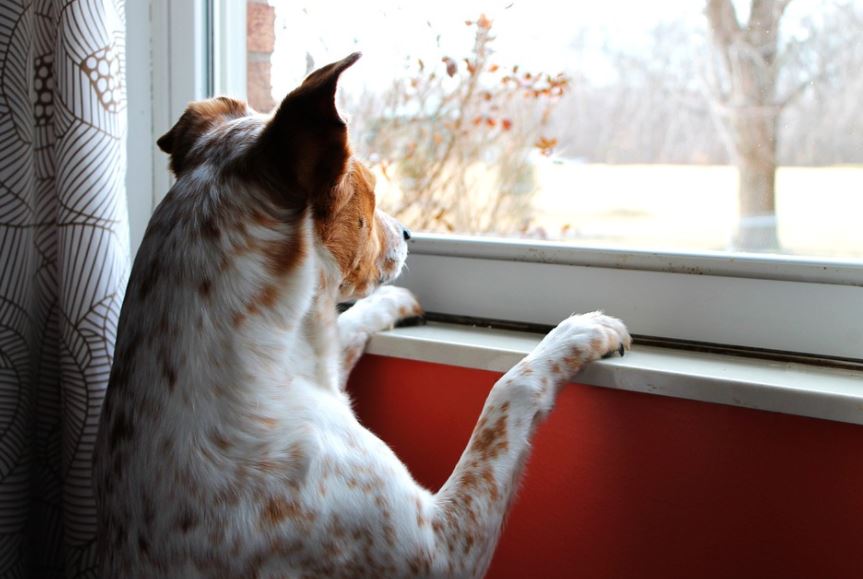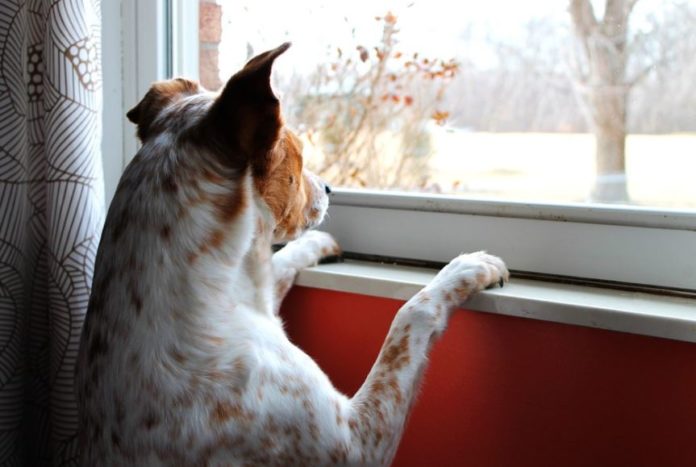Does your dog panic when you leave him alone in his crate? Here’s how to ease his separation anxiety and curb dangerous behaviors.
Most dog parents will have to deal with the issue of separation anxiety when crating their dog. It’s very common for your best friend to get nervous and anxious when you leave the house, especially if you have a young puppy.
It’s important to deal with this issue as soon as possible, so that it doesn’t get progressively worse as they get older. Here’s some tips on how to properly crate dogs with separation anxiety and avoid the common pitfalls.
What is Separation Anxiety?
The basic definition of separation anxiety is: “A condition where animals show symptoms of anxiety or excessive stress when they are left alone”. There can be many consequences if a dog that has separation anxiety isn’t kept properly contained. They can destroy property, and put themselves in danger.
Even if you buy one of the best crates for your dog, it’s still normal for them to get anxious when left alone inside. They would much rather be by their master’s side…and can you really blame them? Luckily there are a few things you can do to help them enjoy their kennel more.
1. Exercise your dog
A tired dog is much less likely to be stressed out and escape his crate. The saying “dog tired” didn’t come from nowhere! If you give your dog enough mental and physical stimulation before crating him, there’s a better chance he’ll settle down and take a nap while you’re out.
2. Make his crate comfortable
The crate that you use for your pooch will depend on his breed, size and strength. Smaller dogs can be contained in a simple wire crate, while bigger dogs will need sturdier creates – like the ones found here – to hold them.
No matter what crate is being used, it’s important to ensure the inside is comfortable. A soft dog bed and durable chew toy will make his time inside much more enjoyable. You can even take it a step further and fill a vessel-style toy with treats to sharpen his mental faculties and keep him occupied for hours.
If your dog chews his bedding there are a couple different measures you can take to help prevent it. One is to periodically switch up the particular toy or bone that is in the crate with him. This will help to prevent boredom, as a bored dog is more likely to chew other things like his bed.
Another thing you can do is use positive reinforcement to help distinguish which things are ok to chew and which aren’t. If you catch him chewing his bedding, remove it from his mouth and then replace it with his toy. Praise him when you do this, and he will begin to associate chewing the toy with positive feelings.
3. Don’t be dramatic
It’s very important that you remain cool and calm whenever you come and go from the house. If the act of departing or arriving is filled with excitement, your dog will mimic this behavior and form a strong emotional connection to your departure. He’ll whine, bark, and display destructive behaviour until you return.
If your pup gets excited and jumps all over you when you get home, it’s important not to reinforce this behavior. Wait until he calms down and then greet him calmly.
4. Get him used to his crate slowly
Prevent separation anxiety by leaving your pup in his crate for short bursts of time, at first. Being left in a crate for a few hours can be quite a shock to a younger pup that isn’t used to it. He won’t know what to think and might fear that you aren’t coming home.
A better way to start off would be to put them in their crate for just a few minutes while staying close by. Then you can progress to leaving the house for short periods of time. Eventually they will get used to this and not get distressed when you leave the house for a few hours, as long as you don’t progress too quickly.
5. Use natural supplements
Another way to help calm dogs is through the use of natural remedies. Look for a supplement to ease his anxiety, invest in a calming essential oil blend formulated for dogs, or grab some Lavender oil from your cupboard! It only takes a drop or two of the essential oil on your dog’s bedding to do the job. This alternative treatment works by calming your pet’s nervous system.
You can even take it a step further by using the positive reinforcement technique with the essential oil. Just put a drop on your dog’s collar and relax with him for awhile. Give him lots of praise and pet him. He should start to associate the smell with good, calm feelings, making the supplement even more effective.
Crate anxiety affect a lot of dogs – but it can be overcome with the right strategy. Patience, persistence and following the tips in this article will help make your pet more comfortable in his crate and happier overall.
Annie Moore is a long-time dog owner and enthusiast. Her and her family started the site bestdogcrates.net after their mischievous Labrador Retriever broke out of his cage one too many times. The aim of the site is to share experiences and knowledge about crates and other dog supplies, based on years of owning many different dog breeds. A lot of the information is from firsthand experience and can help new dog owners with common problems. When she’s not busy caring for the family’s 3 dogs, she likes to travel, watch movies, and relax with her family.

